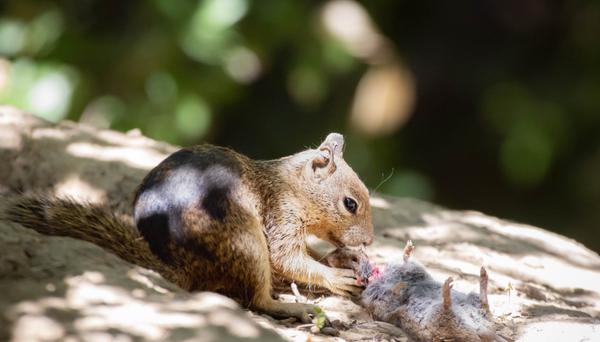California Ground Squirrels Turn Carnivorous
Scientists document an unprecedented shift in California ground squirrels' dietary behavior, as they abandon their typical nut-based diet to actively hunt and consume voles. This remarkable behavioral adaptation may signal broader ecological changes.

Recent observations in a California park have revealed a fascinating transformation in the behavior of ground squirrels. These typically herbivorous rodents have developed a systematic hunting strategy targeting California voles, marking a significant departure from their traditional diet of nuts and seeds.
The research team, conducting a 12-year study in Briones Regional Park, Contra Costa County, documented 74 predation events between June 10 and July 30, 2024. Among these incidents, 41% involved active pursuit of voles, with a 55% success rate. The hunting behavior shows remarkable sophistication - the squirrels demonstrate stalking techniques reminiscent of feline predators, including stealth approaches and targeted attacks to the neck region.
What makes this behavioral shift particularly noteworthy is its widespread nature within the squirrel population. The study identified 27 different individual squirrels engaging in this carnivorous behavior, suggesting a population-level adaptation rather than isolated incidents. After successful hunts, the squirrels consistently display a specific processing technique - decapitating their prey before consuming the flesh, internal organs, and soft bones.
This dietary transformation may be linked to an unprecedented surge in the local vole population. According to iNaturalist records, vole sightings in 2024 have reached seven times the average of the past decade. The abundance of this high-protein food source appears to have triggered a fundamental shift in the squirrels' foraging strategy.
The adaptation has spawned new social behaviors within the squirrel community. Researchers observed increased tolerance among individuals, particularly towards juveniles, who are allowed to share in the spoils. This represents a notable change in typically territorial animals.
While the immediate ecological implications remain under study, this phenomenon raises intriguing questions about the plasticity of animal behavior and dietary preferences. The ground squirrels' transformation from herbivores to active predators demonstrates how quickly species can adapt their feeding strategies when presented with abundant new food sources.
The long-term consequences of this behavioral shift extend beyond immediate predator-prey dynamics. These increased interactions between species could potentially affect disease transmission patterns and alter local ecosystem balance. Continued monitoring will be essential to understand the full impact of this remarkable adaptation in California’s wildlife.